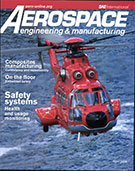Technical Paper
Monitoring and Control of Hybrid Test Systems
2017-09-19
2017-01-2119
For example, it requires very specific knowledge to boot a hybrid system, manage its configuration process, and start and stop the execution of applications, such as simulations, panels or recorders. Likewise, when testers use a heterogeneous test environment, they cannot commit themselves too much to every single test means and its special characteristics.

